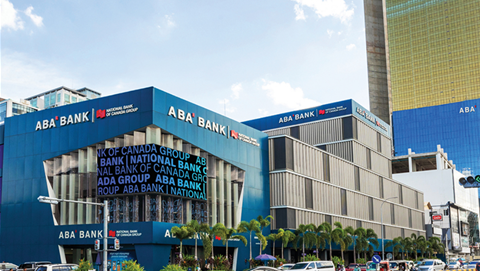We have all become familiar with the post-pandemic mantra of “build back better”. It’s a catch-all ambition but it also brings into sharp relief the physical spaces in which we will work and live as we move forward.
In metropolises already committed to a smart future – including the city state of Singapore – the pursuit of energy efficiency for the economy, businesses and even the family home had foreshadowed its importance to COVID-19 recovery plans. Now, however, buildings are critical to a new, hopefully improved, normal.
Cities only cover around 3% of the Earth’s land, but combined – and in spite of the best efforts of the cleanest cities -- they produce around 72% of its total greenhouse gas (GHG) emissions. The upside is that decarbonising large population centers delivers impact at scale. In the global fight against climate change, the biggest battles must be fought in cities.
Add the impact of the pandemic to the unfolding climate emergency and there is an even more compelling need to step up the rate of change. Policymakers and urban dwellers must play a leading role in rethinking urban planning, to create more sustainable cities.
Singapore’s environmental efforts
In Singapore, buildings account for more than 20% of emissions – a figure better than many cities but still not good enough as far as the national government is concerned. The latest edition of the Singapore Green Building Masterplan (SGBMP) -- part of the Green Plan 2030 -- sets new, more ambitious targets.
In one significant example, the Singapore Building and Construction Authority (BCA) is raising the minimum requirements for new buildings and existing buildings that undergo major retrofits to be 50% and 40% more energy efficient compared to 2005 levels respectively. Previously, the goal was 30% and 25% versus 2005 levels.
The Housing Development Board (HDB) too had already stridently embraced the better buildings mantra. The earliest HDB flats were utilitarian to say the least but the goal now is energy-smart homes that meet both national objectives and respond to the environmental concerns of current and future generations.
One upcoming example will be Punggol Northshore district where residents will be living in smart-enabled homes and able to control appliances through a mobile application. Within the estate, smart lighting will rely on sensors to automatically dim and brighten based on human traffic.
The global effort in achieving energy efficiency
Worldwide, government-led initiatives and regulation clearly are vital but the ultimate buy-in has to come from businesses and home-owners -- and based on a hybrid of social responsibility and simple number-crunching.
Some 80% of the unnecessary energy consumption in buildings could be saved mainly by using digital technologies: from workshops to factories, from data centers to residential buildings to family homes; in other words, in all kinds of buildings.
Interestingly, a recent international survey conducted by Schneider Electric found that consumers considerably underestimate the effect their homes are having on the planet. They believe that industry causes 50% of all GHG emissions while homes only emit 7-8%. In the U.S., however, over a fifth of all emissions are directly attributed to household consumption
Small wonder, therefore, that the term ‘energy efficiency’ resonates better with consumers than ‘sustainability’ or ‘climate change’. Two-thirds of consumers feel home energy efficiency is important. Meanwhile, only half feel their home-made carbon emissions are a threat and that reducing their own carbon footprint is important.
Supporting energy management
What consumers need is technology that enables visibility over energy habits via smart products at home, and which provides objectives that consumers can easily understand and adjust their energy usage to meet.
For businesses, it’s simpler; it’s about energy management technology that helps them achieve energy efficiencies and reduce costs. Energy needs to be at the forefront of their decision-making. It is no longer just a business expense that you just had to pay, as most businesses have come to realise the significant impact that energy has on their bottom line.
Digitalisation of the building stock is a strategic imperative: For small businesses, SMEs, industry, data centers, corporations of all shapes and sizes, and, of course, for building operators.
Buildings encompass a variety of systems behind the scenes. Yet, in many, energy is still wasted on actions like lighting, cooling or heating unoccupied areas.
Digitalisation means we can target this wasted energy without impacting the function of the building or the satisfaction of its occupants.
- Thibault Godefroy is Power Systems Vice President, Asia Pacific, Schneider Electric
In an era of tighter margins and increased competitiveness, developing an energy management plan allows businesses to cut operational costs, increase efficiency and ensure business continuity. Even so, while a Schneider Electric whitepaper found that 79% of companies have energy and sustainability data collection projects, only 41% of those share such information globally across their enterprise.
Increased importance on sustainability
In this respect, if any good has come out of the COVID-19 crisis, it is the acceleration of the pace of digital transformation, encouraging the creation of future-proof companies that are flexible and able to operate in diverse situations. Energy management technologies are mainstreaming as stakeholders demand a more sustainable relationship between energy consumption and business growth.
As the urgency to meet climate targets increases, governments across Asia are implementing policies and plans to ensure that companies take the steps necessary to decrease their energy usage and emissions.
Energy demand in Asia will continue to increase significantly in the coming years. To sustain this rapid expansion of the economy while adapting to any new normal constraints resulting from the pandemic, digitisation is the solution. Asia will need new energy solutions and strategies to deliver far greater energy efficiency.
Here in Singapore, the goal is that 80% of buildings (by floor space) earn BCA Green Mark Scheme recognition by 2030. It’s ambitious but achievable. We are on the brink of Electricity 4.0. -- a convergence of digital + electric, with its scale, scope, and complexity driving a transformation to a more efficient, sustainable, and resilient “New Electric World”.
The question of energy efficiency in the building stock is now attracting the attention it deserves. In addition to sustainability, it’s about calculably profitable benefits for private households, SMEs, and large corporations alike. And, yes, it’s about building back better.
Thibault Godefroy is Power Systems Vice President, Asia Pacific at Schneider Electric
Research sources
- United Nations Sustainable Development Goals, https://www.un.org/sustainabledevelopment/cities/
- Rosmino, C., How the EU is trying to make one hundred cities carbon neutral by 2030, Euronews, https://www.euronews.com/2020/09/07/how-the-eu-is-trying-to-make-one-hundred-cities-carbon-neutral-by-2030
- Leong, G., Parliament: Singapore to create green building masterplan to help mitigate climate change, The Straits Times, 2020, https://www.straitstimes.com/politics/parliament-singapore-to-create-green-building-masterplan-to-help-mitigate-climate-change
- Ramchandani, N., Minimum energy performance requirements to be raised for new, some existing buildings, The Business Times, 2021, https://www.businesstimes.com.sg/government-economy/minimum-energy-performance-requirements-to-be-raised-for-new-some-existing
- Schneider Electric, GreenBiz Research Findings, 2018, https://perspectives.se.com/latest-perspectives/corporate-energy-sustainability-programs-research-report









